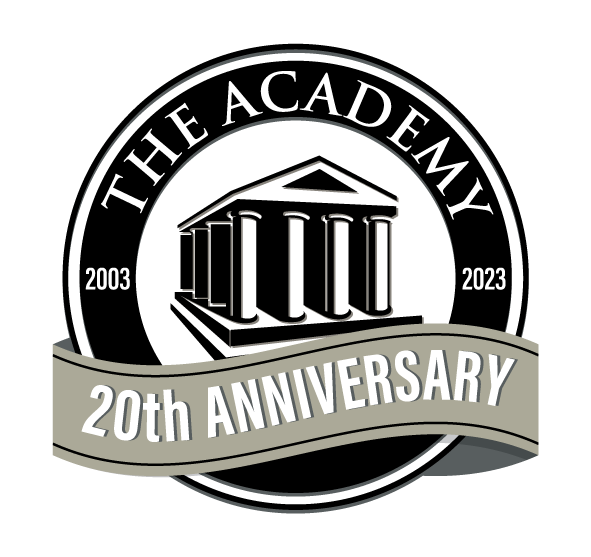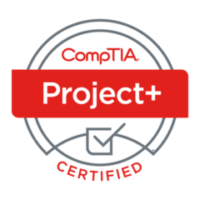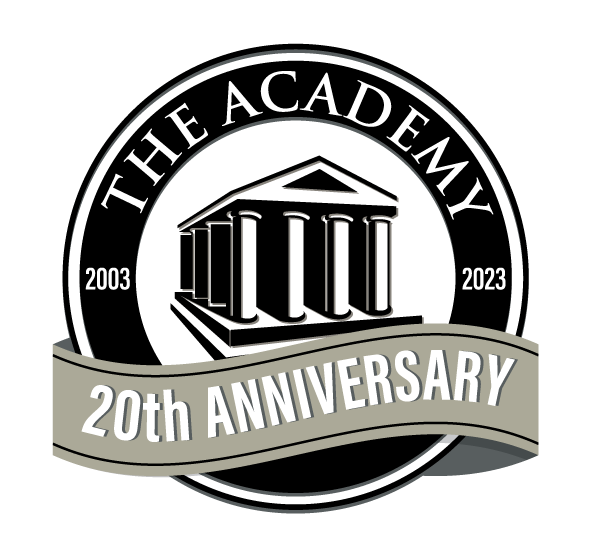CompTIA Project + Training Description
Duration: 5 days
About the Course
CompTIA Project+ is ideal for IT professionals who need to manage smaller, less complex projects as part of their other job duties but still have foundational project management skills. Project+ is more versatile than other certifications because it covers essential project management concepts beyond the scope of just one methodology or framework.
Audience Profile
CompTIA Project+ exam certifies the knowledge and skills required to manage the project life cycle, ensure appropriate, communication, manage resources, manage stakeholders, and maintain project documentation.
Learning Objectives
Project Basics – Summarize the properties of project, phases, schedules, roles and responsibilities, and cost controls, as well as identifying the basic aspects of Agile methodology
Project Constraints – Predict the impact of various constraint variables and influences throughout the project and explain the importance of risk strategies and activities
Communication & Change Management – Understand appropriate communication methods of influence and use change control processes within the context of a project
Project Tools & Documentation – Compare and contrast various project management tools and analyze project and partner-centric documentation
Certification Exam
This training course prepares students for the CompTIA Project+ PK0-005 Exam.
Prerequisites
At least 12 months of cumulative project management experience, managing, directing or participating in small- to medium-scale projects or equivalent education
What’s included?
- Authorized Courseware
- Intensive Hands on Skills Development with an Experienced Subject Matter Expert
- Hands-on practice on real Servers and extended lab support 1.800.482.3172
- Examination Vouchers & Onsite Certification Testing- (excluding Adobe and PMP Boot Camps)
- Academy Code of Honor: Test Pass Guarantee
- Optional: Package for Hotel Accommodations, Lunch and Transportation
With several convenient training delivery methods offered, The Academy makes getting the training you need easy. Whether you prefer to learn in a classroom or an online live learning virtual environment, training videos hosted online, and private group classes hosted at your site. We offer expert instruction to individuals, government agencies, non-profits, and corporations. Our live classes, on-sites, and online training videos all feature certified instructors who teach a detailed curriculum and share their expertise and insights with trainees. No matter how you prefer to receive the training, you can count on The Academy for an engaging and effective learning experience.
Methods
- Instructor Led (the best training format we offer)
- Live Online Classroom – Online Instructor Led
- Self-Paced Video
Speak to an Admissions Representative for complete details
| Start | Finish | Public Price | Public Enroll | Private Price | Private Enroll |
|---|---|---|---|---|---|
| 5/12/2025 | 5/16/2025 | ||||
| 6/2/2025 | 6/6/2025 | ||||
| 6/23/2025 | 6/27/2025 | ||||
| 7/14/2025 | 7/18/2025 | ||||
| 8/4/2025 | 8/8/2025 | ||||
| 8/25/2025 | 8/29/2025 | ||||
| 9/15/2025 | 9/19/2025 | ||||
| 10/6/2025 | 10/10/2025 | ||||
| 10/27/2025 | 10/31/2025 | ||||
| 11/17/2025 | 11/21/2025 | ||||
| 12/8/2025 | 12/12/2025 | ||||
| 12/29/2025 | 1/2/2026 |
Curriculum
1.0 Project Basics
1.1 Summarize the properties of a project.
• Temporary
• Start and finish
• Unique
• Reason/purpose
• Project as part of a program
• Project as part of a portfolio
1.2 Classify project roles and responsibilities.
• Sponsor/champion
– Approval authority
– Funding
– Project charter
– Baseline
– High-level requirements
– Control
– Marketing
– Roadblocks
– Business case/justification
• Project manager
– Manage team, communication, scope, risk, budget, and time
– Manage quality assurance
– Responsible for artifacts
• Project coordinator
– Support project manager
– Cross-functional coordination
– Documentation/administrative support
– Time/resource scheduling
– Check for quality
• Stakeholder
– Vested interest
– Provide input and requirements
– Project steering
– Expertise
• Scheduler
– Develop and maintain project schedule
– Communicate timeline and changes
– Reporting schedule performance
– Solicit task status from resources
• Project team
– Contribute expertise to the project
– Contribute deliverables according to schedule
– Estimation of task duration
– Estimation of costs and dependencies
• Project Management Office (PMO)
– Sets standards and practices for organization
– Sets deliverables
– Provides governance
– Key performance indicators and parameters
– Provides tools
– Outlines consequences of non-performance
– Standard documentation/templates
– Coordinate resources between projects
1.3 Compare and contrast standard project phases.
• Initiation
– Project charter
– Business case
– High-level scope definition
– High-level risks
• Planning
– Schedule
– Work breakdown structure
– Resources
– Detailed risks
– Requirements
– Communication plan
– Procurement plan
– Change management plan
– Budget
• Execution
– Deliverables
• Monitor and control
– Risks/issues log
– Performance measuring and reporting
– Quality assurance/governance
– Change control
– Budget
• Closing
– Transition/integration plan
– Training
– Project sign off
– Archive project documents
– Lessons learned
– Release resources
– Close contracts
1.4 Identify the basics of project cost control.
• Total project cost
• Expenditure tracking
• Expenditure reporting
• Burn rate
• Cost baseline/budget
– Plan vs. actual
1.5 Identify common project team organizational structures.
• Functional
– Resources reporting to functional manager
– Project manager has limited or no authority
• Matrix
– Authority is shared between functional managers and project managers
– Resources assigned from functional area to project
– Project manager authority ranges from weak to strong
• Projectized
– Project manager has full authority
– Resources report to project manager
– Ad hoc resources
1.6 Given a scenario, execute and develop project schedules.
• Work breakdown structure
• Scheduling activities
– Determine tasks
– Determine task start/finish dates
– Determine activity/task durations
– Determine milestones
– Set predecessors
– Set dependencies
– Sequence tasks
– Prioritize tasks
– Determine critical path
– Allocate resources
– Set baseline
– Set quality gates
– Set governance gates
– Client sign off
– Management approval
– Legislative approval
1.7 Identify the basic aspects of the Agile methodology.
• Readily adapt to new/changing requirements
• Iterative approach
• Continuous requirements gathering
• Establish a backlog
• Burndown charts
• Continuous feedback
• Sprint planning
• Daily standup meetings/SCRUM meetings
• SCRUM retrospective
• Self-organized and self-directed teams
1.8 Explain the importance of human resource, physical resource and personnel management.
• Resource management concepts
– Shared resources
– Dedicated resources
– Resource allocation
– Resource shortage
– Resource overallocation
– Low quality resources
– Benched resources
– Interproject dependencies
– Interproject resource contention
• Personnel management
– Team building
– Trust building
– Team selection
– Skill sets
– Remote vs. in-house
– Personnel removal/replacement
– Communication issues
– Conflict resolution
– Smoothing
– Forcing
– Compromising
– Confronting
– Avoiding
– Negotiating
2.0 Project Constraints
2.1 Given a scenario, predict the impact of various constraint variables and influences throughout the project.
• Common constraints
– Budget
– Scope
– Deliverables
– Quality
– Environment
– Resources
– Requirements
– Scheduling
• Influences
– Change request
– Scope creep
– Constraint reprioritization
– Interaction between constraints
– Stakeholders/sponsors/management
– Other projects
2.2 Explain the importance of risk strategies and activities.
• Strategies
– Accept
– Mitigate
– Transfer
– Avoid
– Exploit
• Risk activities
– Identification
– Quantification
– Planning
– Review
– Response
– Register
– Prioritization
– Communication
3.0 Communication & Change Management
3.1 Given a scenario, use the appropriate communication method.
• Meetings
– Kick-off meetings
– Virtual vs. in-person meetings
– Scheduled vs. impromptu meetings
– Closure meetings
• Email
• Fax
• Instant messaging
• Video conferencing
• Voice conferencing
• Face-to-face
• Text message
• Distribution of printed media
• Social media
3.2 Compare and contrast factors influencing communication methods.
• Language barriers
• Time zones/geographical factors
• Technological factors
• Cultural differences
• Interorganizational differences
• Intraorganizational differences
• Personal preferences
• Rapport building/relationship building
• Tailor method based on content of message
• Criticality factors
• Specific stakeholder communication requirements
– Frequency
– Level of report detail
– Types of communication
– Confidentiality constraints
– Tailor communication style
3.3 Explain common communication triggers and determine the target audience and rationale.
• Audits
• Project planning
• Project change
• Risk register updates
• Milestones
• Schedule changes
• Task initiation/completion
• Stakeholder changes
• Gate reviews
• Business continuity response
• Incident response
• Resource changes
3.4 Given a scenario, use the following change control process within the context of a project.
• Change control process
– Identify and document
– Evaluate impact and justification
– Regression plan (Reverse changes)
– Identify approval authority
– Obtain approval
– Implement change
– Validate change/quality check
– Update documents/audit documents/version control
– Communicate throughout as needed
• Types of common project changes
– Timeline change
– Funding change
– Risk event
– Requirements change
– Quality change
– Resource change
– Scope change
3.5 Recognize types of organizational change.
• Business merger/acquisition
• Business demerger/split
• Business process change
• Internal reorganization
• Relocation
• Outsourcing
4.0 Project Tools & Documentation
4.1 Compare and contrast various project management tools.
• Project scheduling software
• Charts
– Process diagram
– Histogram
– Fishbone
– Pareto chart
– Run chart
– Scatter chart
– Gantt chart
• Dashboard/status report
• Knowledge management tools
– Intranet sites
– Internet sites
– Wiki pages
– Vendor knowledge bases
– Collaboration tools
• Performance measurement tools
– Key performance indicators
– Key performance parameters
– Balanced score card
• SWOT analysis
• Responsible, accountable, consulted, informed (RACI) matrix
4.2 Given a scenario, analyze project centric documentation.
• Project charter
• Project management plan
• Issues log
• Organizational chart
• Scope statement
• Communication plan
• Project schedule
• Status report
• Dashboard information
• Action items
• Meeting agenda/meeting minutes
4.3 Identify common partner or vendor-centric documents and their purpose.
• Request for information
• Request for proposal
• Request for quote
• Mutually binding documents
– Agreements/contract
– Non-disclosure agreement
– Cease and desist letter
– Letter of Intent
– Statement of work
– Memorandum of understanding
– Service level agreement
– Purchase order
– Warranty


